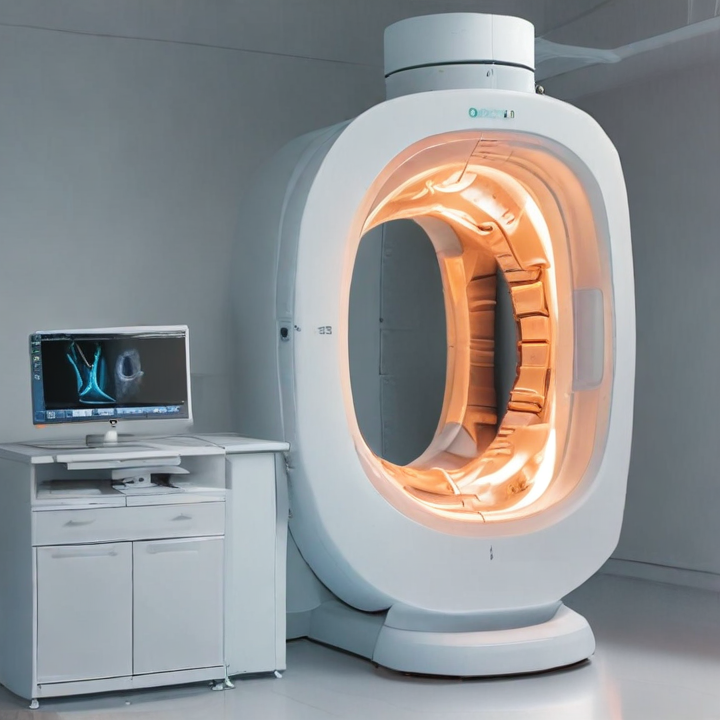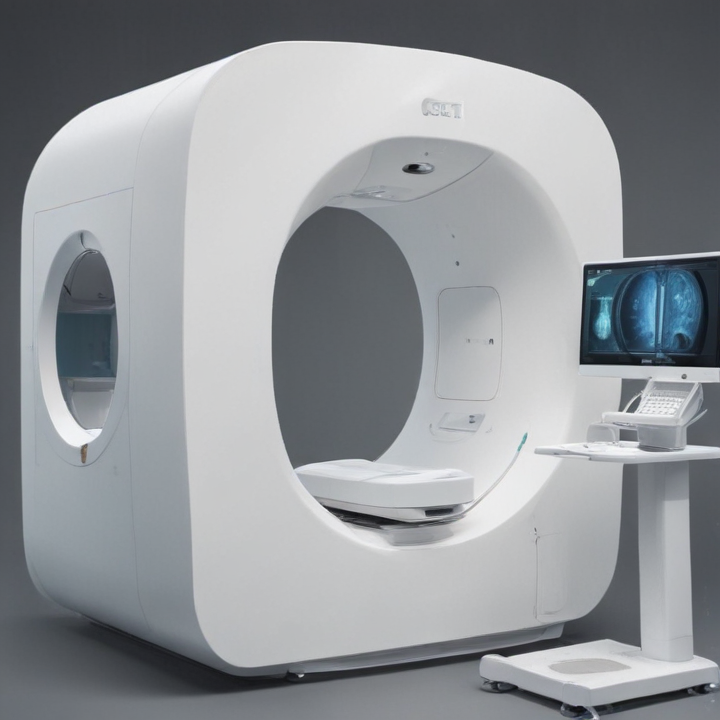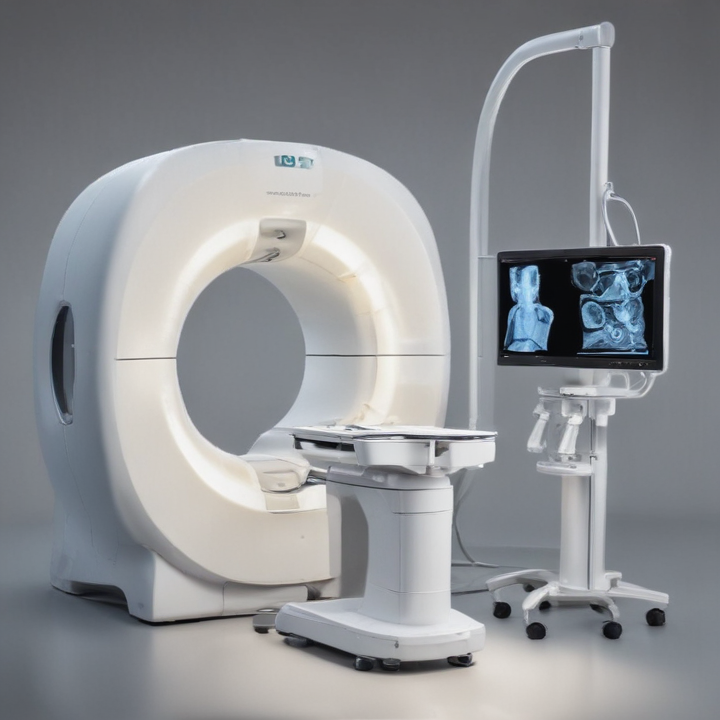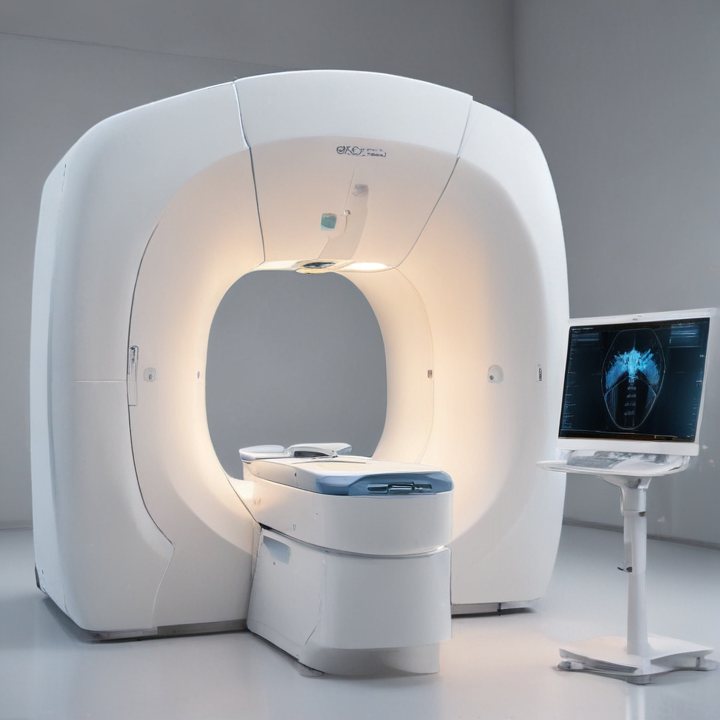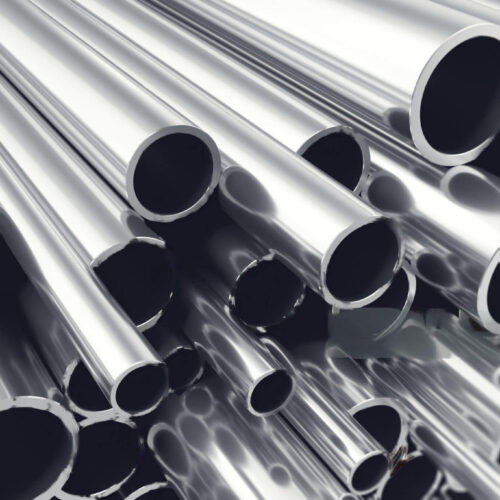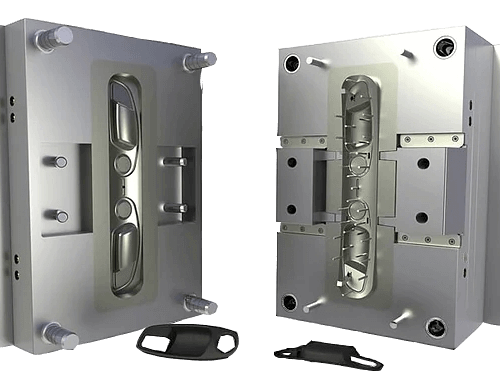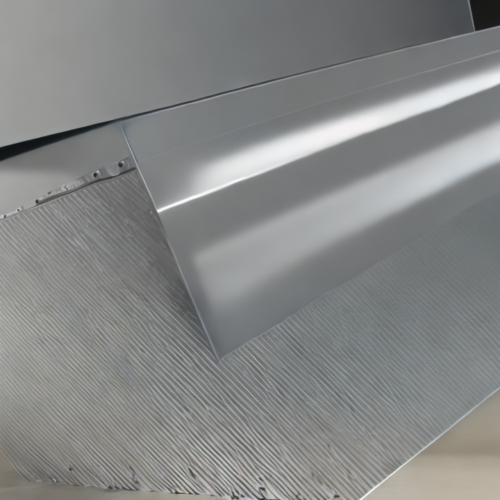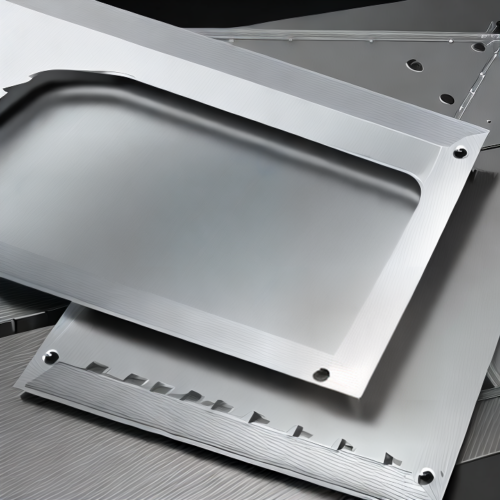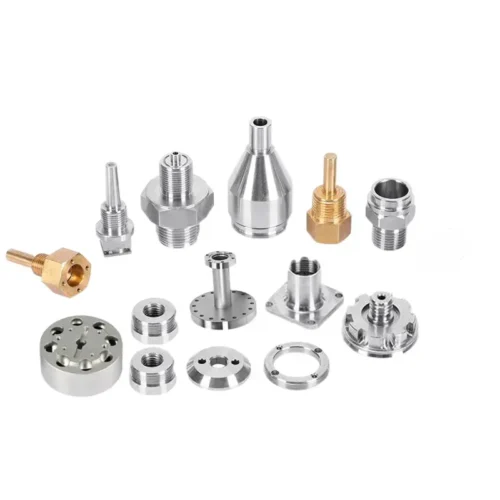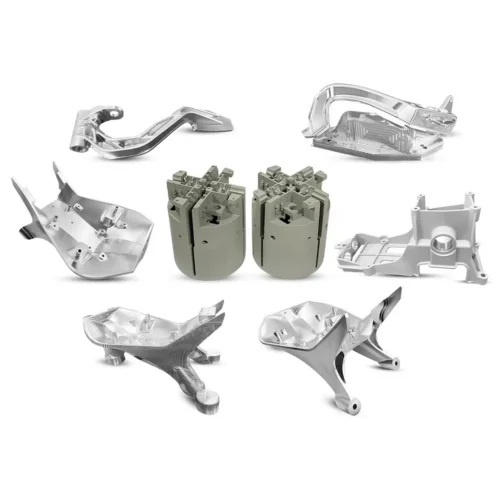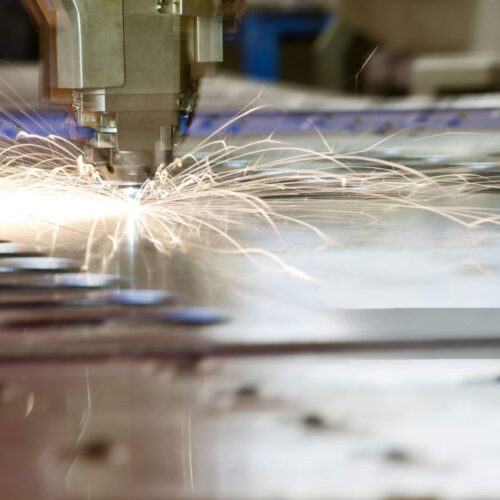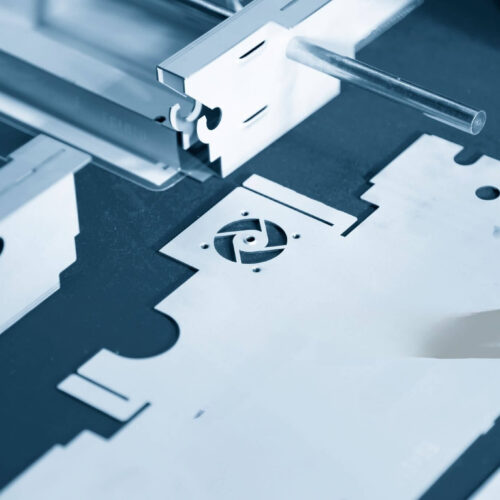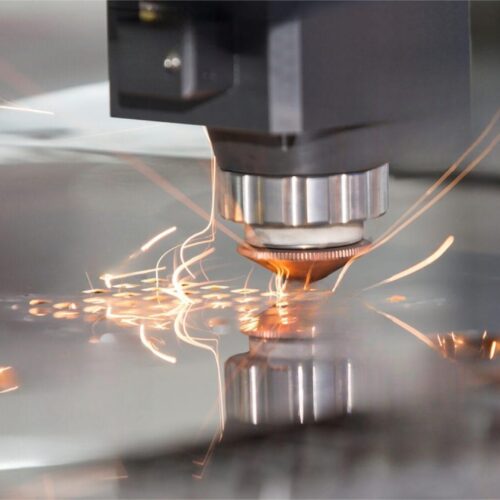cbct scanner Safety Certifications
Cone Beam Computed Tomography (CBCT) scanners are essential tools in dental and maxillofacial imaging, and their safety is paramount. These devices must adhere to stringent safety standards and certifications to ensure they are safe for both patients and operators. Key safety certifications and standards for CBCT scanners include:
1. FDA Approval (21 CFR Part 807): In the United States, the Food and Drug Administration (FDA) regulates CBCT scanners as medical devices. Manufacturers must submit a premarket notification [510(k)] to demonstrate that the device is safe and effective.
2. IEC 60601-1: The International Electrotechnical Commission (IEC) standard 60601-1 outlines general requirements for basic safety and essential performance of medical electrical equipment. This standard ensures the electrical safety of CBCT scanners.
3. IEC 60601-2-63: This specific IEC standard applies to the particular safety of dental extra-oral X-ray equipment, including CBCT scanners. It addresses risks associated with the use of X-ray radiation in dental practices.
4. IEC 60601-1-3: This standard provides requirements for radiation protection in diagnostic X-ray equipment. It ensures that CBCT scanners are designed to minimize radiation exposure to patients and operators.
5. CE Marking (European Union): In the European Economic Area (EEA), CBCT scanners must have CE marking, indicating conformity with relevant EU safety, health, and environmental requirements. Compliance involves meeting standards like the Medical Devices Directive (MDD) 93/42/EEC or the Medical Device Regulation (MDR) 2017/745.
6. ISO 13485: This international standard specifies requirements for a quality management system where an organization needs to demonstrate its ability to provide medical devices that consistently meet customer and regulatory requirements. CBCT manufacturers often need ISO 13485 certification.
These certifications and standards collectively ensure that CBCT scanners are manufactured and operated in a manner that prioritizes safety and efficacy, providing reassurance to healthcare providers and patients alike.
List Reference Technical Parameters of "cbct scanner"
Cone Beam Computed Tomography (CBCT) Scanner Technical Parameters:
1. Field of View (FOV):
- Size: Ranges from small (4x4 cm) to large (20x25 cm).
- Shapes: Cylindrical or spherical.
2. Voxel Size:
- Typical range: 0.075 mm to 0.4 mm.
- Smaller voxels provide higher resolution.
3. Imaging Mode:
- Full rotation (360 degrees) or partial rotation (180 degrees).
4. Detector Type:
- Flat-panel detectors (FPDs) or image intensifiers.
- Digital detector array is standard.
5. X-ray Tube Voltage (kVp):
- Commonly between 60 kVp to 120 kVp.
- Adjusted based on the anatomical area and patient size.
6. Tube Current (mA):
- Ranges from 1 mA to 10 mA.
- Higher currents provide better image quality but increase radiation dose.
7. Exposure Time:
- Typically between 2 to 40 seconds.
- Balances image quality and radiation dose.
8. Reconstruction Time:
- Varies depending on the system, usually between 10 seconds to a few minutes.
9. Image Reconstruction Algorithms:
- Filtered back projection (FBP) or iterative reconstruction techniques.
10. Software Capabilities:
- 3D visualization.
- Multi-planar reconstruction (MPR).
- Volume rendering.
- Implant planning and cephalometric analysis.
11. Radiation Dose:
- Effective dose ranges from 20 µSv to 200 µSv, depending on the FOV and imaging parameters.
- Lower than traditional CT but higher than standard dental radiography.
12. Spatial Resolution:
- Typically 0.125 mm to 0.4 mm.
13. Contrast Resolution:
- Capability to distinguish between different tissues.
14. Patient Positioning:
- Standing, sitting, or supine.
- Adjustable head supports for stability.
15. Dimensions and Weight:
- Varies by model; typically around 1.5 meters high, 1 meter wide, and 1.5 meters deep.
- Weight ranges from 200 kg to 600 kg.
16. Power Requirements:
- Standard electrical outlet (110V/220V).
- Power consumption varies by model, generally around 2-5 kW.
These parameters define the operational capabilities and limitations of CBCT scanners, impacting their application in dental, maxillofacial, and ENT imaging.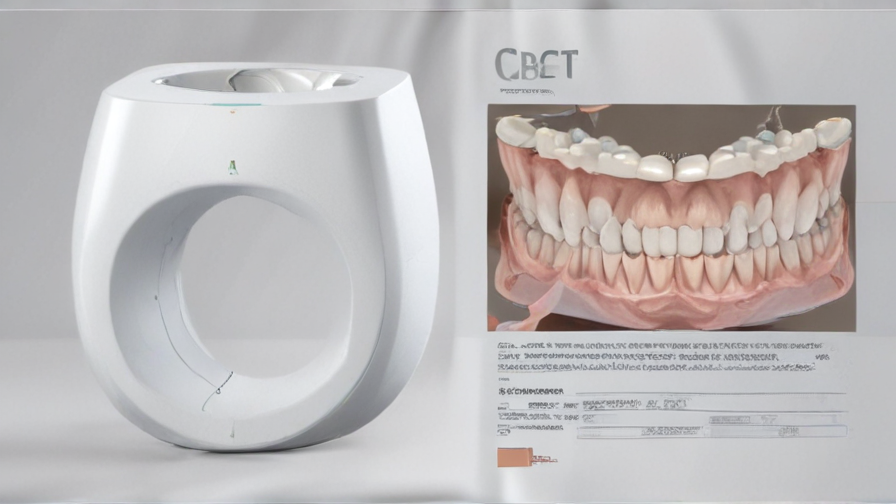
List Product features of "cbct scanner"
A CBCT (Cone Beam Computed Tomography) scanner is a specialized imaging device commonly used in dental and medical fields to produce 3D images of teeth, soft tissues, nerve pathways, and bone in a single scan. Here are the key product features:
1. 3D Imaging Capability:
- Provides high-resolution, three-dimensional images for accurate diagnosis and treatment planning.
- Ideal for detailed views of dental structures, the jaw, and sinuses.
2. Reduced Radiation Exposure:
- Utilizes a cone-shaped X-ray beam, minimizing radiation exposure compared to traditional CT scans.
- Optimized scanning protocols further reduce radiation doses.
3. Fast and Efficient Scanning:
- Scans are typically completed in under a minute.
- Reduces patient discomfort and movement artifacts.
4. Versatile Applications:
- Used in dentistry for implant planning, orthodontics, endodontics, and oral surgery.
- Applicable in ENT (ear, nose, throat) for sinus and airway analysis.
- Supports maxillofacial and cranial assessments.
5. High Image Quality:
- Advanced software algorithms enhance image clarity and detail.
- Provides accurate measurements and detailed views for precise diagnostics.
6. Compact Design:
- Smaller footprint compared to traditional CT scanners.
- Suitable for various clinical environments, including private practices and small clinics.
7. User-Friendly Interface:
- Intuitive software for easy operation and image manipulation.
- Allows for seamless integration with existing practice management and imaging software.
8. Patient Comfort:
- Open design reduces patient claustrophobia.
- Adjustable settings accommodate patients of different sizes and conditions.
9. Data Export and Sharing:
- Images can be easily exported in standard formats (DICOM) for sharing and further analysis.
- Facilitates collaboration with other healthcare professionals.
10. Advanced Diagnostic Tools:
- Provides tools for virtual implant placement, surgical guides, and treatment simulations.
- Enhances precision in surgical planning and outcome prediction.
These features make CBCT scanners indispensable tools in modern dental and medical practices, enhancing diagnostic accuracy, patient safety, and treatment outcomes.
List Various Types of "cbct scanner"
Cone Beam Computed Tomography (CBCT) scanners are specialized imaging devices used primarily in dental, maxillofacial, and ear, nose, and throat (ENT) practices. Here are various types of CBCT scanners, categorized by their intended use and key features:
Dental CBCT Scanners
1. Intraoral CBCT Scanners
- Example: KaVo OP 3D
- Usage: High-resolution imaging for individual teeth and small anatomical structures.
- Features: Compact design, focused field of view.
2. Panoramic CBCT Scanners
- Example: Planmeca ProMax 3D
- Usage: Comprehensive imaging of the entire jaw and dental arches.
- Features: Adjustable fields of view, integration with other dental imaging systems.
3. Cephalometric CBCT Scanners
- Example: Carestream CS 9300
- Usage: Orthodontic evaluations, including jaw and skull imaging.
- Features: Cephalometric arm, multiple scanning protocols.
Maxillofacial CBCT Scanners
1. High-Resolution CBCT Scanners
- Example: NewTom VGi evo
- Usage: Detailed imaging for maxillofacial surgery planning.
- Features: High-resolution scans, advanced software for 3D reconstruction.
2. Multi-FOV CBCT Scanners
- Example: i-CAT FLX V-Series
- Usage: Versatile imaging for various clinical applications.
- Features: Multiple field-of-view options, enhanced image quality.
ENT CBCT Scanners
1. Sinus CBCT Scanners
- Example: Xoran MiniCAT
- Usage: Imaging for sinus and airway analysis.
- Features: High-resolution imaging, compact design for ENT offices.
2. Temporal Bone CBCT Scanners
- Example: Planmed Verity CBCT
- Usage: Detailed imaging of the temporal bone for otologic assessments.
- Features: High-resolution images, specific protocols for ear anatomy.
Hybrid CBCT Scanners
1. Hybrid Imaging Systems
- Example: Sirona Orthophos SL 3D
- Usage: Combines 2D and 3D imaging capabilities.
- Features: Versatile imaging modes, suitable for dental and maxillofacial applications.
Portable CBCT Scanners
1. Mobile CBCT Scanners
- Example: Carestream CS 8100 3D
- Usage: Portable imaging for remote or point-of-care diagnostics.
- Features: Compact, easy to transport, suitable for on-site scanning.
Each type of CBCT scanner serves specific clinical needs, providing tailored imaging solutions to enhance diagnostic accuracy and treatment planning.
List Application of "cbct scanner"
Cone Beam Computed Tomography (CBCT) scanners are advanced imaging devices primarily used in dental and maxillofacial practices. Here are some key applications:
1. Dental Implant Planning: CBCT provides detailed 3D images of the jawbone and surrounding structures, crucial for accurate implant placement and assessing bone density.
2. Orthodontics: It assists in evaluating teeth alignment, root orientation, and jaw structure, aiding in the development of effective orthodontic treatment plans.
3. Endodontics: CBCT helps in diagnosing complex root canal anatomy, detecting root fractures, and evaluating the success of previous endodontic treatments.
4. Oral and Maxillofacial Surgery: Surgeons use CBCT to plan surgeries involving the jaws, teeth, and facial bones, such as extractions, reconstructive surgeries, and tumor removal.
5. TMJ Analysis: It provides detailed images of the temporomandibular joint (TMJ), helping diagnose disorders and plan treatments.
6. Pathology Detection: CBCT aids in identifying cysts, tumors, and other pathologies in the jaws and facial region, facilitating early diagnosis and treatment planning.
7. Sinus Evaluation: It is used to assess the maxillary sinuses, which is important for sinus lift procedures and diagnosing sinus-related issues affecting dental health.
8. Periodontics: CBCT aids in the assessment of periodontal bone levels and the detection of periodontal disease, improving treatment outcomes.
9. Trauma Assessment: It helps in evaluating fractures and other injuries to the dental and facial structures, providing detailed images for accurate diagnosis and treatment planning.
10. Sleep Apnea: CBCT is used to analyze airway morphology and assist in diagnosing and planning treatment for obstructive sleep apnea.
These applications make CBCT a valuable tool in modern dental and maxillofacial practices, providing comprehensive, detailed, and accurate imaging for a wide range of clinical needs.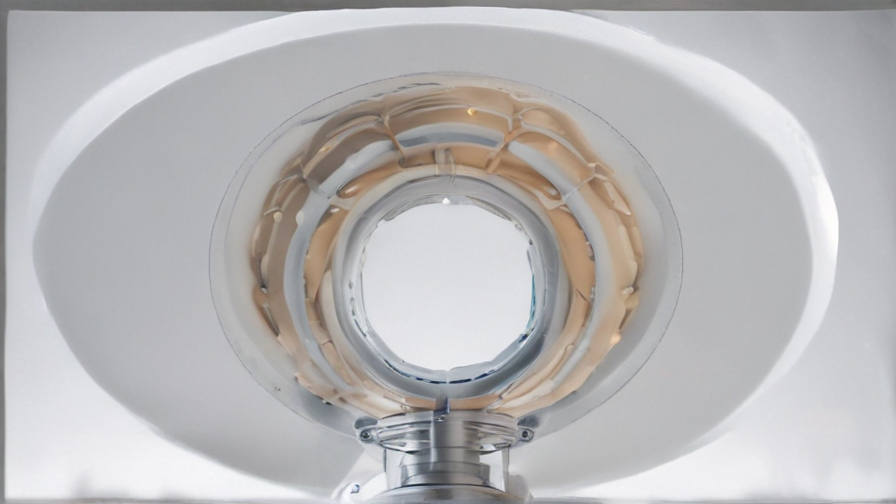
List Buyer Types of "cbct scanner"
Buyers of CBCT (Cone Beam Computed Tomography) scanners generally fall into several key categories, each with distinct needs and motivations. Here's an overview:
1. Dental and Oral Surgeons:
- Purpose: Utilize CBCT scanners for precise imaging of teeth, jaws, and surrounding structures.
- Benefits: Enhanced diagnosis, improved treatment planning for implants, orthodontics, and surgical procedures.
2. Orthodontists:
- Purpose: Use CBCT to assess jaw alignment, teeth positioning, and airway analysis.
- Benefits: Accurate planning for braces, aligners, and other orthodontic treatments, resulting in better patient outcomes.
3. Periodontists:
- Purpose: Require CBCT for detailed imaging of bone structures and soft tissues.
- Benefits: Facilitates diagnosis and treatment of periodontal diseases, planning for grafts, and implant placements.
4. Endodontists:
- Purpose: Use CBCT to visualize root canals and surrounding bone.
- Benefits: Improved accuracy in root canal treatments, identification of complex canal structures, and detection of fractures.
5. Maxillofacial Surgeons:
- Purpose: Need CBCT for comprehensive imaging of the facial skeleton.
- Benefits: Essential for planning and executing surgeries involving trauma, reconstructive procedures, and pathologies.
6. General Dentists:
- Purpose: Integrate CBCT for broad diagnostic capabilities in general practice.
- Benefits: Enhanced diagnosis and treatment planning for a variety of dental procedures, from implants to extractions.
7. ENT (Ear, Nose, Throat) Specialists:
- Purpose: Utilize CBCT for sinus imaging and related structures.
- Benefits: Better visualization for diagnosing sinusitis, planning sinus surgeries, and evaluating nasal obstructions.
8. Academic and Research Institutions:
- Purpose: Employ CBCT for research, training, and education.
- Benefits: Provides high-quality imaging data for scientific studies and educational purposes, improving the training of future specialists.
Each buyer type prioritizes different features and benefits of CBCT scanners, driven by their specific clinical requirements and patient care goals.
List "cbct scanner" Project Types for Different Industries
CBCT (Cone Beam Computed Tomography) scanners are utilized across various industries for specialized imaging needs. Here are project types for different sectors:
1. Dental and Maxillofacial:
- Orthodontics: Precise 3D imaging for treatment planning and monitoring progress.
- Implantology: Detailed bone structure assessment to guide implant placement.
- Endodontics: High-resolution images for diagnosing root canal issues and other dental pathologies.
- Oral Surgery: Pre-surgical planning and post-surgical evaluation.
2. Medical:
- ENT (Ear, Nose, Throat): Imaging of sinus cavities, nasal passages, and ear structures for surgical planning and diagnosis.
- Orthopedics: Assessment of complex fractures, joint conditions, and alignment issues.
- Radiation Therapy Planning: Precise mapping of tumor locations for targeted radiotherapy.
3. Veterinary:
- Small Animal Medicine: Detailed imaging for dental, orthopedic, and oncological assessments in pets.
- Equine Medicine: Evaluation of dental issues, sinus problems, and orthopedic conditions in horses.
4. Industrial and Engineering:
- Materials Science: Non-destructive testing of materials, inspecting internal structures without damaging the samples.
- Manufacturing: Quality control and failure analysis of components, ensuring structural integrity and identifying defects.
- Archaeology: Non-invasive examination of artifacts, fossils, and mummies, providing internal views without destruction.
5. Security and Forensics:
- Airport Security: Scanning of luggage and cargo for hidden objects or contraband.
- Forensic Science: Analysis of evidence, such as bullet trajectories in bones, age estimation, and identification of unknown remains.
Each industry leverages CBCT technology to obtain precise, 3D images for accurate diagnosis, planning, and analysis, enhancing the efficiency and effectiveness of their respective practices.
cbct scanner Accessories Upgrades and Custom Manufacturing Options
CBCT (Cone Beam Computed Tomography) scanners are integral in medical and dental imaging. Enhancing these devices with accessories and custom upgrades can significantly improve their performance and user experience. Here's an overview of available options:
Accessories
1. Patient Positioning Aids: Customized headrests, chin supports, and bite blocks ensure accurate and comfortable positioning, reducing movement artifacts.
2. Radiation Protection: Lead aprons, thyroid collars, and other protective gear minimize patient exposure to radiation.
3. Software Upgrades: Advanced imaging software provides enhanced diagnostic tools, including 3D reconstruction, implant planning, and endodontic applications.
4. Calibration Phantoms: These are essential for maintaining image quality and ensuring consistent, reliable performance.
5. Workstations and Monitors: High-resolution monitors and ergonomic workstations improve image interpretation and user comfort.
Upgrades
1. Image Quality Enhancements: Upgrading sensors and detectors can improve resolution and contrast, leading to more precise diagnostics.
2. Extended Field of View (FOV): Modifying the scanner to capture larger anatomical areas can be beneficial for maxillofacial and craniofacial applications.
3. Faster Processing Units: Upgrading to more powerful CPUs and GPUs decreases image reconstruction time, enhancing workflow efficiency.
4. Wireless Capabilities: Adding wireless data transfer options improves connectivity and facilitates easier integration with existing IT systems.
Custom Manufacturing Options
1. Tailored FOV Sizes: Customizing the FOV to specific clinical needs ensures optimal coverage while minimizing unnecessary radiation exposure.
2. Bespoke Software Solutions: Developing custom software solutions can cater to unique clinical workflows and diagnostic requirements.
3. Modular Designs: Implementing modular components allows for easier upgrades and maintenance, extending the scanner's lifespan.
4. Ergonomic Adjustments: Customizing the scanner's design to improve ergonomics enhances user comfort and efficiency during long scanning sessions.
These enhancements and customizations enable CBCT scanners to meet specific clinical demands, improving diagnostic accuracy and patient care.
List Quality Control and The Manufacturing Process of "cbct scanner"
Quality Control and Manufacturing Process of CBCT Scanners
#### Manufacturing Process:
1. Design and Development:
- Initial design using CAD software.
- Prototyping to test design functionality.
2. Component Manufacturing:
- X-ray Source: Precision-engineered to produce high-quality X-rays.
- Detector: Manufactured to ensure high sensitivity and resolution.
- Rotating Gantry: Assembled to provide smooth, stable movement.
3. Assembly:
- Integration of components (X-ray source, detector, gantry) into the main unit.
- Wiring and installation of electronic circuits and boards.
4. Calibration:
- Calibration of X-ray output and detector sensitivity.
- Alignment of the gantry to ensure accurate rotational movement.
5. Software Integration:
- Installation of operating software.
- Customization and testing of user interface and imaging algorithms.
6. Testing:
- Functional testing of all components.
- Initial imaging tests to verify performance and accuracy.
#### Quality Control:
1. Incoming Quality Control (IQC):
- Inspection of raw materials and components for defects.
- Verification against specifications and standards.
2. In-Process Quality Control (IPQC):
- Continuous monitoring during the assembly process.
- Regular checks for alignment, component placement, and soldering quality.
3. Final Quality Control (FQC):
- Comprehensive testing of the assembled unit.
- Calibration checks and verification of imaging performance.
- Stress testing to ensure durability and reliability.
4. Certification and Compliance:
- Ensuring compliance with medical device regulations (e.g., FDA, CE).
- Obtaining necessary certifications and documentation.
5. Post-Manufacturing Quality Assurance:
- Batch testing to ensure consistency across units.
- Detailed record-keeping for traceability and future reference.
This streamlined process ensures that CBCT scanners are manufactured to the highest standards, providing accurate and reliable imaging for medical diagnostics.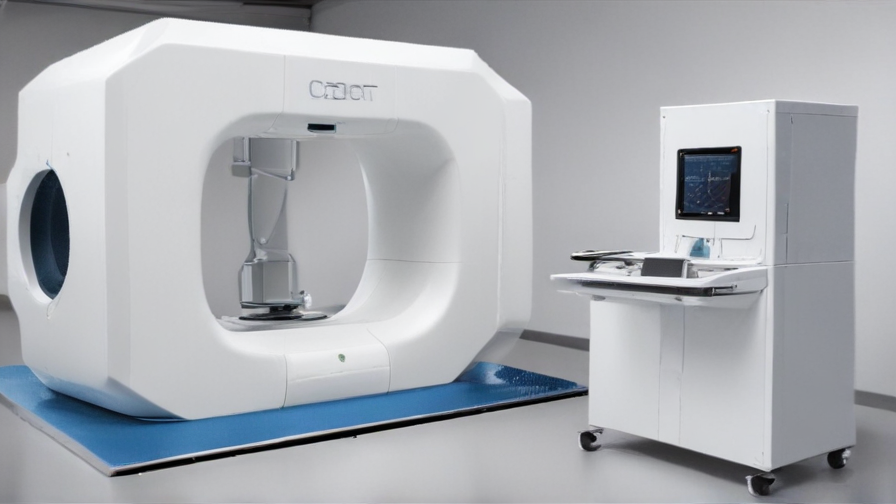
How to use "cbct scanner"
A Cone Beam Computed Tomography (CBCT) scanner is a specialized type of X-ray machine used in dentistry and maxillofacial imaging to create detailed 3D images of the teeth, oral and maxillofacial region, and surrounding structures.
Steps to Use a CBCT Scanner
1. Patient Preparation:
- Ensure the patient removes any metallic items (e.g., jewelry, glasses) that might interfere with the scan.
- Position the patient comfortably, either sitting or standing, depending on the scanner model.
2. Positioning:
- Align the patient’s head using the laser guides to ensure accurate positioning. The patient’s head must be centered in the machine.
- Use chin rests, headbands, or supports to stabilize the head and minimize movement during the scan.
3. Selecting the Scan Parameters:
- Choose the appropriate settings based on the diagnostic requirement (e.g., field of view, resolution).
- Input patient information and adjust the machine settings accordingly.
4. Performing the Scan:
- Instruct the patient to remain still and bite down on a bite block if necessary.
- Begin the scan. The CBCT scanner will rotate around the patient’s head, capturing multiple images from different angles.
- The scanning process usually takes around 20-40 seconds.
5. Post-Scan Processing:
- The captured images are reconstructed into a 3D model using specialized software.
- Review the 3D images to assess the area of interest. Adjust the view and enhance the images if needed for better diagnosis.
6. Safety Precautions:
- Always follow radiation safety protocols to minimize exposure.
- Ensure the patient and operator use protective equipment if required.
Maintenance and Calibration
Regular maintenance and calibration of the CBCT scanner are essential to ensure accurate and reliable imaging. Follow the manufacturer’s guidelines for routine checks and servicing.
By following these steps, you can effectively use a CBCT scanner to obtain high-quality 3D images for diagnostic purposes.
"cbct scanner" Comparative Analysis
Cone-beam computed tomography (CBCT) scanners are pivotal in modern dental practices for their detailed 3D imaging capabilities, which are essential for accurate diagnostics and treatment planning. Here's a comparative analysis of key aspects of CBCT scanners based on recent research and market insights:
Diagnostic Accuracy
CBCT scanners offer high-resolution 3D imaging, significantly enhancing diagnostic precision in various dental and maxillofacial procedures. They excel in implant planning, root canal treatment, and orthognathic surgery by providing detailed views of dental structures, root canals, and bone irregularities. Compared to traditional 2D imaging, CBCT delivers superior accuracy, although it may not match the ultra-high resolution of micro-CT, which is limited to laboratory use due to higher radiation doses.
Radiation Dose
One of the advantages of CBCT over conventional CT is the significantly lower radiation dose. For instance, the PreXion3D Excelsior CBCT scanner offers a range of modes, including low-dose options, making it safer for repeated use, particularly in pediatric and orthodontic cases. The typical radiation dose for CBCT scans ranges between 20-40 microsieverts, which is a fraction of what traditional medical CT scans emit.
Versatility and Clinical Applications
CBCT scanners are highly versatile, supporting a wide range of dental and maxillofacial applications. They are crucial for implant placement, endodontic assessments, evaluating impacted teeth, and airway analysis. Devices like the PreXion3D Excelsior integrate seamlessly with CAD/CAM systems, enhancing the precision of surgical guides and other dental restorations. This integration supports comprehensive treatment planning and improved patient outcomes.
Technological Features
Modern CBCT scanners, such as those offered by PreXion and other leading manufacturers, incorporate advanced features like AI-powered positioning, multiple scan modes, and DICOM compatibility. These features facilitate better patient management, enhanced diagnostic capabilities, and more efficient clinical workflows. Additionally, the inclusion of tools for patient education and case acceptance, such as 3D animated videos, helps in improving communication and treatment adherence.
Economic Considerations
While CBCT scanners represent a significant investment, their ability to enhance diagnostic accuracy and treatment planning can lead to improved clinical outcomes and higher patient satisfaction. This, in turn, can increase practice revenue and justify the initial expenditure. Factors such as device capabilities, evolving clinical needs, and comprehensive service and support from suppliers are critical considerations for clinicians when selecting a CBCT scanner.
In summary, CBCT scanners offer unmatched diagnostic capabilities, lower radiation doses, and versatile clinical applications, making them indispensable tools in modern dentistry. Their integration with digital workflows and advanced technological features further enhances their value, despite the initial investment costs.
"cbct scanner" Warranty and Support
Warranty and Support for CBCT Scanners
Warranty:
CBCT (Cone Beam Computed Tomography) scanners typically come with a manufacturer's warranty that covers defects in materials and workmanship. Standard warranties range from one to three years, depending on the manufacturer and model. Some companies offer extended warranties at an additional cost, which can provide coverage for up to five years. The warranty generally includes:
1. Parts and Labor: Coverage for repairs or replacements of defective parts.
2. Technical Support: Access to customer support for troubleshooting and technical issues.
3. Software Updates: Provision of software updates to ensure the scanner operates with the latest features and security enhancements.
4. On-Site Service: Many warranties include on-site service visits by certified technicians for maintenance and repairs.
Support:
Support for CBCT scanners is crucial for ensuring optimal performance and minimal downtime. Most manufacturers provide comprehensive support packages, which may include:
1. 24/7 Technical Assistance: Round-the-clock access to technical support via phone, email, or online chat.
2. Remote Diagnostics: Ability for support teams to remotely diagnose and address issues, often reducing the need for on-site visits.
3. Training and Education: Initial training sessions for new users, and ongoing education resources such as webinars, user manuals, and online tutorials.
4. Preventive Maintenance: Scheduled maintenance visits to perform routine checks and calibrations, ensuring the scanner remains in peak condition.
5. Spare Parts Availability: Assurance of readily available spare parts to minimize repair times.
6. Software Support: Assistance with software-related issues, including installation, configuration, and troubleshooting.
Choosing a CBCT scanner with a robust warranty and support package is essential for maintaining productivity and ensuring reliable, long-term operation. Always review the specific terms and conditions provided by the manufacturer to fully understand the coverage and support available.
List "cbct scanner" FAQ
CBCT Scanner FAQ
1. What is a CBCT scanner?
A CBCT (Cone Beam Computed Tomography) scanner is a medical imaging device that uses X-rays to produce 3D images of the teeth, soft tissues, nerve pathways, and bone in a single scan.
2. How does a CBCT scanner work?
It rotates around the patient, capturing multiple images from different angles. These images are then reconstructed into a single 3D image by computer software.
3. What are the benefits of using a CBCT scanner?
CBCT scanners provide detailed and accurate images, which can aid in diagnosis and treatment planning. They are particularly useful in dentistry for assessing tooth position, bone structure, and pathology.
4. Is CBCT scanning safe?
Yes, CBCT scans use low doses of radiation, comparable to traditional dental X-rays, and are considered safe when used appropriately.
5. How long does a CBCT scan take?
The scan itself typically takes less than a minute, but the entire process, including preparation and positioning, may take around 10-15 minutes.
6. Do I need to prepare for a CBCT scan?
No special preparation is needed. You may be asked to remove any metal objects such as jewelry, glasses, or hearing aids that can interfere with the imaging.
7. When are CBCT scans used?
They are commonly used in dental implant planning, orthodontics, endodontics, oral surgery, and TMJ (temporomandibular joint) analysis.
8. Can everyone undergo a CBCT scan?
While CBCT scans are safe, they might not be recommended for pregnant women due to radiation exposure, unless absolutely necessary.
9. How are the results of a CBCT scan used?
The 3D images help dentists and surgeons evaluate anatomy and pathology more accurately, leading to better treatment outcomes.
10. Is the CBCT scan covered by insurance?
Coverage depends on the insurance policy and the medical necessity of the scan. It is advisable to check with your insurance provider beforehand.
This concise FAQ aims to provide a basic understanding of CBCT scanners, their use, benefits, and considerations for patients.
Top 10 FAQ with answer about cbct scanner for Buyer Sourcing from China
Top 10 FAQ about Sourcing CBCT Scanners from China
1. What is a CBCT scanner?
CBCT (Cone Beam Computed Tomography) scanners are medical imaging devices that provide 3D images of dental structures, soft tissues, nerve paths, and bone in the craniofacial region in a single scan.
2. Why source CBCT scanners from China?
China offers competitive pricing, advanced technology, and a wide range of options. Manufacturers in China often provide cost-effective solutions without compromising on quality.
3. What should I consider when choosing a CBCT scanner?
Consider image quality, field of view, scan time, radiation dose, software features, and after-sales support. Ensure the scanner meets your specific clinical needs.
4. Are Chinese CBCT scanners reliable?
Many Chinese manufacturers adhere to international quality standards and certifications such as ISO and CE. It's crucial to research and choose reputable manufacturers with positive reviews and certifications.
5. What certifications should a CBCT scanner have?
Look for CE, FDA, or ISO certifications to ensure the device meets international safety and performance standards.
6. How do I verify the quality of a CBCT scanner from China?
Request product samples, user reviews, and clinical case studies. Also, consider visiting the manufacturer or arranging for a third-party inspection.
7. What is the average cost of a CBCT scanner from China?
Prices vary depending on features and brand, typically ranging from $50,000 to $150,000. Request quotes from multiple suppliers to compare.
8. What is the lead time for delivery?
Lead times can vary; expect 4-8 weeks for manufacturing and additional time for shipping, customs clearance, and installation.
9. What kind of after-sales support is available?
Check if the manufacturer offers remote support, on-site training, maintenance services, and software updates.
10. How do I handle customs and import regulations?
Work with experienced freight forwarders and customs brokers familiar with medical equipment imports. Ensure all necessary documentation and certifications are in order to avoid delays.
By addressing these questions, buyers can make informed decisions when sourcing CBCT scanners from China.

